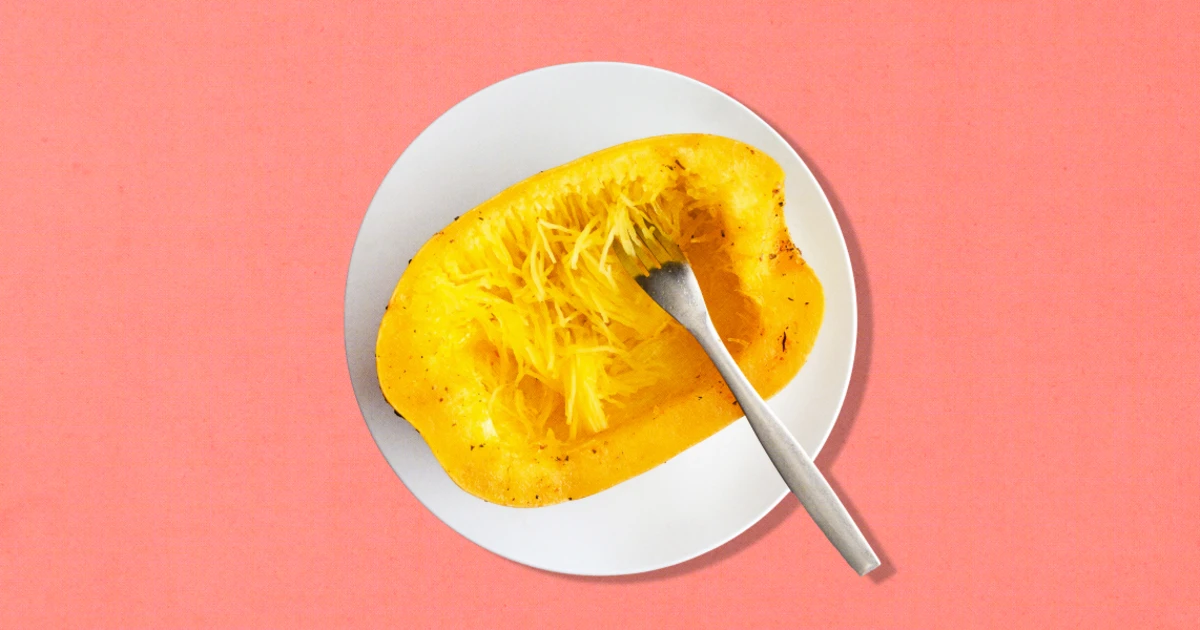
Spaghetti squash: Since it arrived on American shores in the 1930s, it has been touted as an economical alternative for pasta and, in the ‘80s, as a health food.
It has been referred to as the “perfect dieter’s food because it fills you up but has almost no carbs,” boasting vitamins C and B-6, antioxidants and minerals like potassium. But how do you cook it so it’s al dente like spaghetti and not, as one Redditor called it, “delicious mush”?
“Sometimes, you just get a spaghetti squash that’s very watery. You’ve roasted it, it’s tender, but you scrape it out and it’s a little waterlogged just like sometimes you can have a juicy watermelon,” chef Emilie Symons, chef-instructor in the online Health-Centered Arts and Food Operations program at the Institute of Culinary Education, tells TODAY.com.
“If you do have a sort of juicy squash, one thing you can do is, after you scrape strands out, spread (them) out on the sheet pan and put (them) back in the oven to let some of that liquid evaporate,“ she recommends.
The chef says you can do everything right with a squash from start to finish and still get a mushy end result, but there are steps along the way that you can take to make sure your spaghetti squash Alfredo or pad thai is as noodly as the original.
How to Cut Open Spaghetti Squash
You must be extremely careful when cutting spaghetti squash in half, Symons says, adding that if you have a particularly tough squash, poke it in a few places with a fork and microwave it for one to two minutes. Those steam holes ensure the squash doesn’t explode in your microwave.
She says she generally trims off a little bit of the bottom and top of the squash so it’s more stable for cutting. Plus, it’s easier to cut through the squash’s exposed flesh than its skin.
A Chef’s Tip for Scooping out Squash Seeds
Whether or not you scoop out the seeds or leave them in for roasting is up to you, as cooked squash is easier to scoop out, but she has a sure-fire method for scraping seeds out at of any raw squash.
“I use a two-piece canning lid, that inner circle part that actually looks like a disc,” she says. “It works really, really well to scrape out squash seeds.”
After easily scooping out the seeds, preheat your oven to 400 F and take out a sheet pan.
Don’t Forget to Season Your Spaghetti Squash
“Sometimes, I’ll take the seeds out and I’ll kind of put some herbs and some garlic in the cavity of the squash and flip it over, and that infuses the squash with a nice flavor, because spaghetti squash is truly very mild,” she says. “It’s a good carrier of flavor, like tofu.”
How to Achieve Al Dente Spaghetti Squash
Symons suggests the following to get al dente pasta-like strands of squash: Place your seasoned halves cut-side down on your sheet pan and put it in the oven for at least 30 minutes (a big squash can take a long time, up to an hour) — but don’t leave it in for too long or you’ll enter mush territory.
“Use a fork or a paring knife to see if your utensil goes through the skin and into the flesh pretty easily, like if you were cutting through a piece of cake or something tender. If it goes in easily without any resistance, then your squash is done,” she explains. “If you push it in and you try to, like, pull it out, and the squash comes with you, probably not done yet.”
At this point, you can remove the squash from the skin using a fork, just like you would “when you’re making granita,” Symons says, revealing its strands.
From there, you can make anything from masala “pasta” and pesto “pasta” to spaghetti squash “pizza” and chile con carne.
A Non-Pasta Dish to Make With Spaghetti Squash
You might think there’s only one way to eat it because there’s pasta in the gourd’s name, but you’d be mistaken.
“Instead of making a bread-based canape, you can take the spaghetti squash after it’s cooked, bring it out of any excess moisture, pat it together, maybe beat an egg in there, a little sprinkling of flour, maybe some seasonings, if you’d like and make it into basically like a savory pancake,” Symons says. “That’s delicious as a base for a little creme fraiche as well as salmon.”
I took her advice, used a combination of egg, almond flour, onion and garlic powders, and drizzled a little mustard-based barbecue sauce on top. It was absolutely fabulous — and really filling, too.



